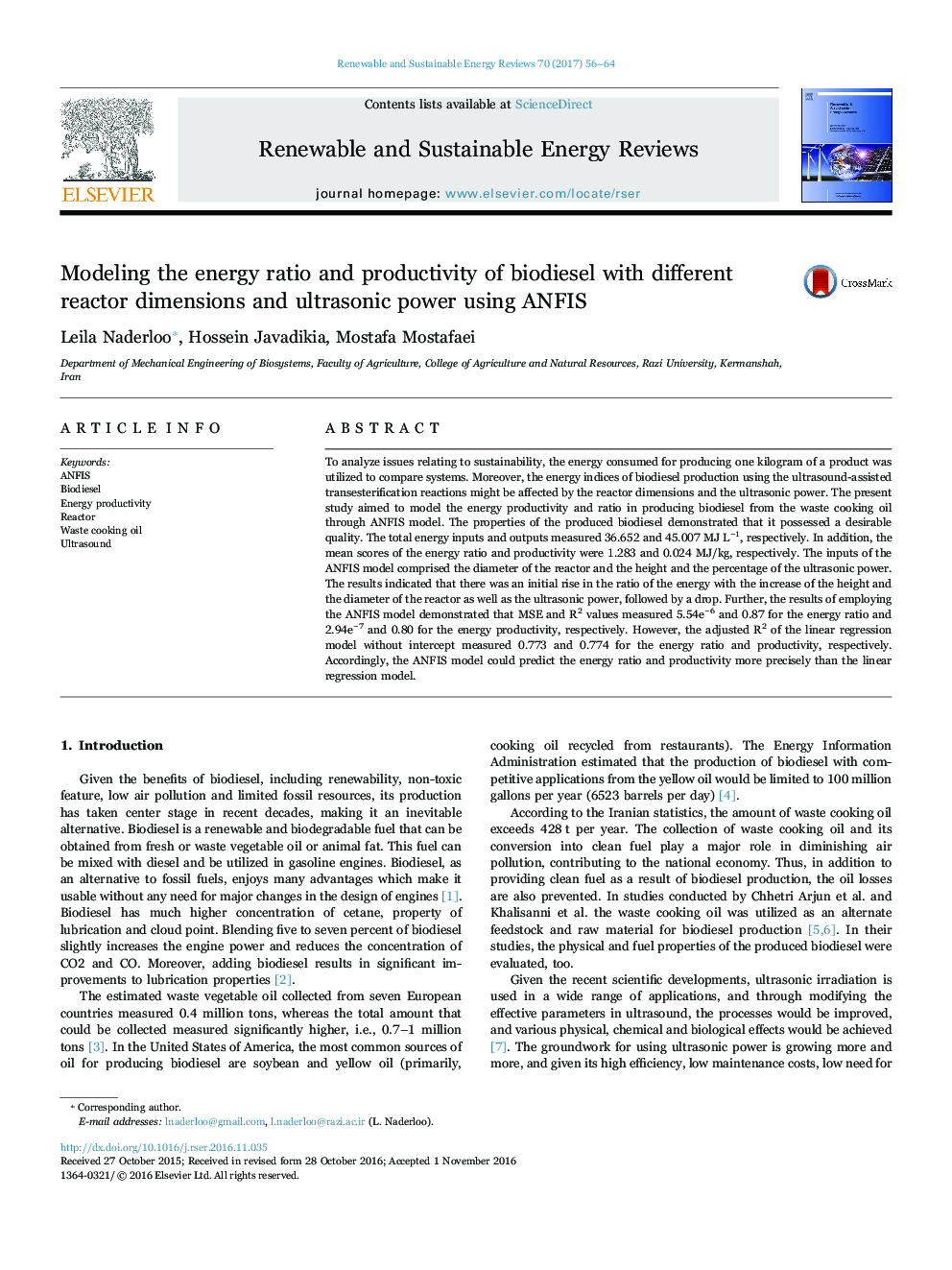| Article ID | Journal | Published Year | Pages | File Type |
|---|---|---|---|---|
| 5483210 | Renewable and Sustainable Energy Reviews | 2017 | 9 Pages |
Abstract
To analyze issues relating to sustainability, the energy consumed for producing one kilogram of a product was utilized to compare systems. Moreover, the energy indices of biodiesel production using the ultrasound-assisted transesterification reactions might be affected by the reactor dimensions and the ultrasonic power. The present study aimed to model the energy productivity and ratio in producing biodiesel from the waste cooking oil through ANFIS model. The properties of the produced biodiesel demonstrated that it possessed a desirable quality. The total energy inputs and outputs measured 36.652 and 45.007Â MJÂ Lâ1, respectively. In addition, the mean scores of the energy ratio and productivity were 1.283 and 0.024 MJ/kg, respectively. The inputs of the ANFIS model comprised the diameter of the reactor and the height and the percentage of the ultrasonic power. The results indicated that there was an initial rise in the ratio of the energy with the increase of the height and the diameter of the reactor as well as the ultrasonic power, followed by a drop. Further, the results of employing the ANFIS model demonstrated that MSE and R2 values measured 5.54eâ6 and 0.87 for the energy ratio and 2.94eâ7 and 0.80 for the energy productivity, respectively. However, the adjusted R2 of the linear regression model without intercept measured 0.773 and 0.774 for the energy ratio and productivity, respectively. Accordingly, the ANFIS model could predict the energy ratio and productivity more precisely than the linear regression model.
Related Topics
Physical Sciences and Engineering
Energy
Renewable Energy, Sustainability and the Environment
Authors
Leila Naderloo, Hossein Javadikia, Mostafa Mostafaei,
